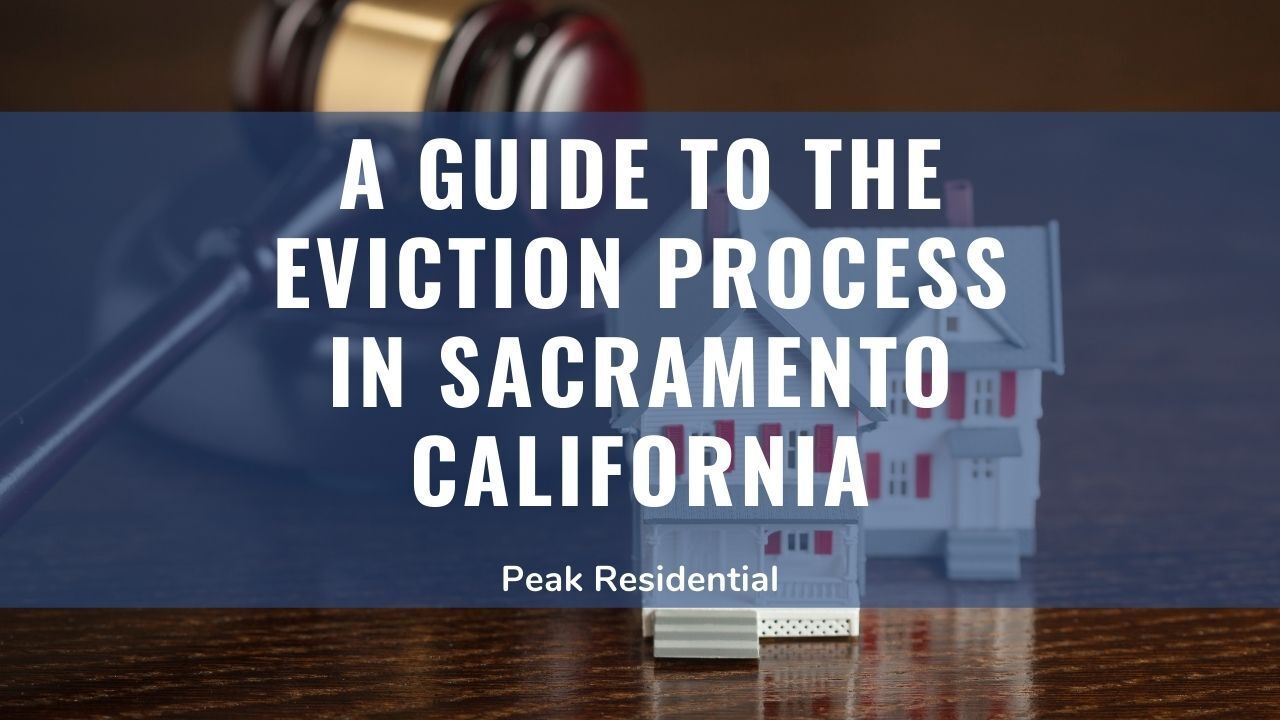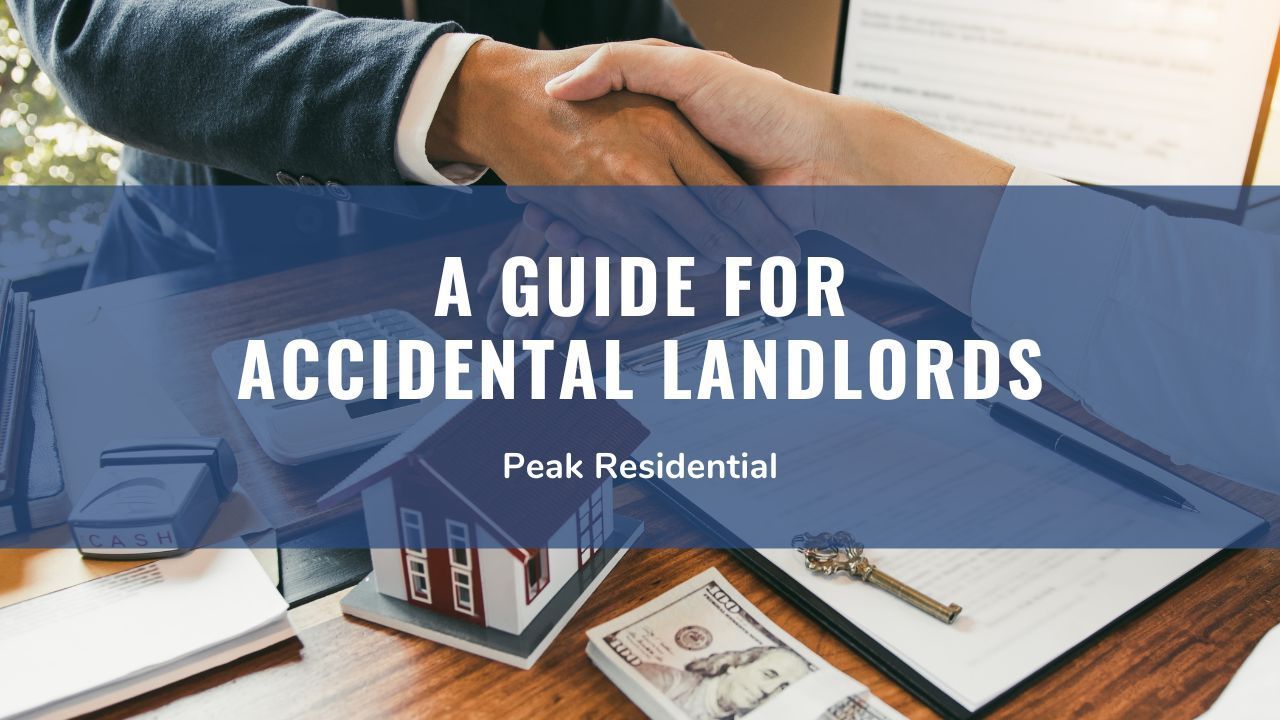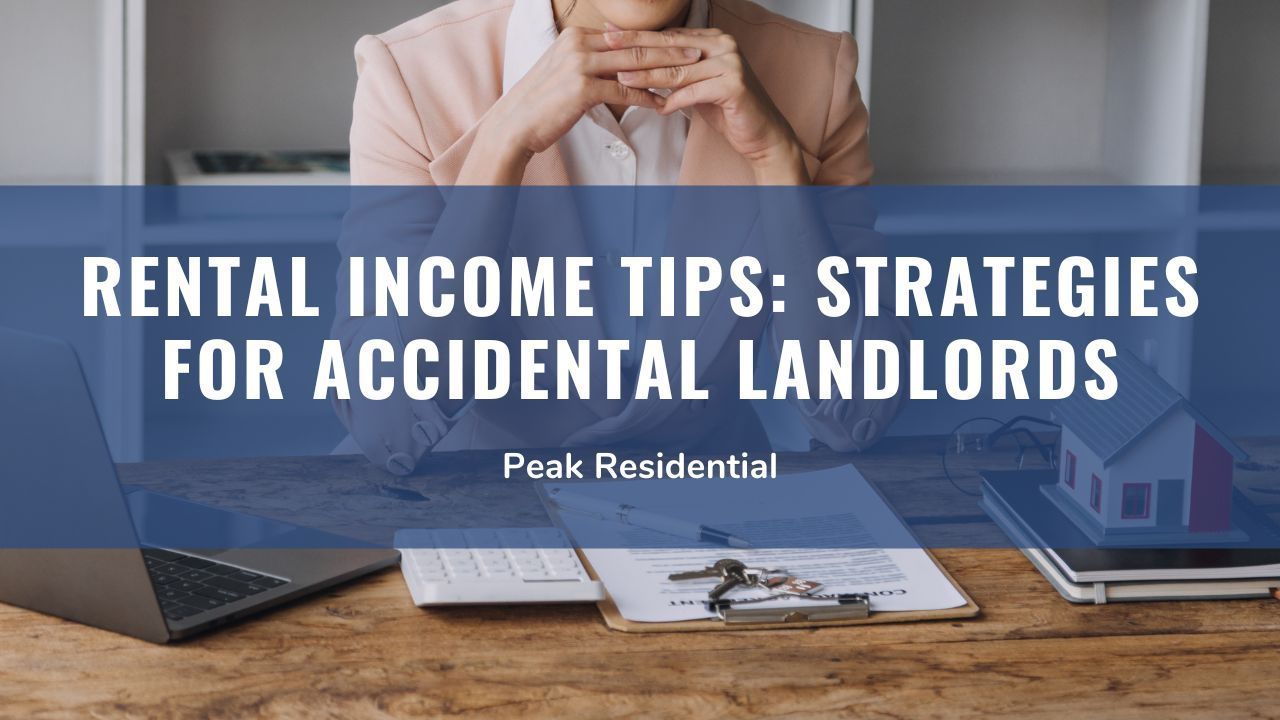A Guide to the Eviction Process in Sacramento California
Every state in the U.S. has eviction process laws that California landlords must adhere to when evicting a tenant from their property. California is no exception!
As rental property owners in California, you can evict a tenant from your property for various reasons. including failure to send rent, violation of a lease term on the agreement, and illegal activity. In certain cases, collecting the security deposit from a tenant won't even be enough to cover your losses.
Normally, it’ll take landlords anywhere from 5 to 8 weeks for an eviction to start. This, however, is dependent upon various factors such as the eviction laws. For example, it takes into consideration the reason for eviction, how quickly the tenant was served with the summons and complaint, and if the tenant requests for a stay of execution.
Evictions can be difficult and time consuming for landlords, which is why we've put together this blog. If you need professional help with eviction laws, get in touch with our team.
The following is a step-by-step overview of the California eviction process, no matter the terms specified on the rental or lease agreement.
Step #1: Eviction Notice
The first step in the process in California when you evict tenants starts with California landlords serving a written notice. Each possible ground for starting the eviction procedure has its own proper eviction notice.
For nonpayment of rent, landlords must serve the tenant a 3-Day Notice to Pay. Tenants must pay rent to the landlord the day it is due. If as the landlord, you provide any grace periods, make sure you address them on any rental agreement. If a tenant does not pay or the tenant is late to pay rent, you have grounds for eviction under California law.
Landlords can also use the tenant's security deposit to cover the unpaid money once the tenants vacate the rental with notice, but don't forget that a security deposit may not cover the full amount owed.
The eviction notice gives the tenant 3 days notice to either pay rent the due or move out within 3 days. If the tenant takes neither of the two options and remains on the property, a landlord can move to the legal system for further help.
For lease violations, a landlord must serve the tenant with a 3-Day Notice to Comply. This serves as written notice for eviction and will give the tenant a 3 day initial eviction period to correct the lease violation and avoid being evicted. Lease violations that fall under this category include violating the pet policy, having too many people reside in the unit, and causing negligent property damage.
If, when trying to evict tenants under the California law, a tenant fails to move out of the rental even after being given proper tenant notice, landlords can take further action in their California eviction. Under California law and according to the eviction process in California, failing to move out after being given eviction is grounds for an eviction lawsuit. Under the terms of the lease, the tenant may have to pay rent until the end of tenancy.
The notice provided by the California landlords give the tenant 3 days to fix the lease violation or move out of the rental unit. In the case of negligent rental property damage, for example, the eviction notice gives the tenant 3 days to make the necessary repairs under law. If the tenant doesn't, landlords have legal grounds proceed with the eviction process.
For a ‘Holdover Tenant’, the notice period depends on the length of the lease or rental agreement. For tenants who have lived in the rental unit for less than a year, a landlord can serve them a 30-Day Notice to Quit. For tenants who have a month-to-month lease agreement, a landlord can choose to simply not renew the lease and the month-to-month tenant has to move out of the rental unit by the tenancy's end.
For tenants who’ve lived in the landlords rental unit for more than a year, you, the landlord, can serve them a 60-Day Notice to Quit, under law.
If the tenant refuses to leave the rental after the eviction notice has expired, again, a landlord can move to the legal system for further help. At this point, any terms made in the lease agreement or rental agreement have expired.
For tenants who’ve committed illegal activity, a landlord must serve them a 3 days’ notice first under law. Examples of illegal actions include unlawful business activity, criminal threats, and criminal nuisances, under law. Even then, a landlord needs to give the tenant appropriate notice. If a landlord fails to give the tenant written eviction notice prior to beginning the eviction, the eviction is illegal.
Landlords can move to court once the notice expires and the tenant has refused to move out, even if the tenants are still paying rent. Unpaid rent or if a tenant violates any of the terms agreed upon in the lease agreement, it's grounds for further action on eviction proceedings.
Step #2: Court Summons & Complaint
If a tenant doesn’t move out after the notice period has ended, a landlord can continue the eviction process and move to court and file a summons and complaint. This is the first step to getting your case into the court system and you, the landlord, must do so at the appropriate court.
The proper legal documents must be issued to a court clerk by the landlord, to start the legal eviction process. In the state, the court costs and filing fee for filing a summons and complaint as part of eviction lawsuits will cost you anywhere between $385 and $440 in filing law fees.
This is the beginning of the eviction process uner California eviction laws, when a landlord evicts a tenant yourself doesn't work. It can also lead to an eviction lawsuit with the tenant that will often go to court after filling out eviction court forms.
You may also need to pay an extra $40 to be issued with a Writ of Execution if the court rules in your favor.
Once you’ve filed the complaint, you’ll have up to 60 days to serve it to the tenant. If you fail to do so, the case will most likely be dismissed.
Step #3: Filing an Answer
After being served, the tenant will have an opportunity to respond to the complaint. However, in California, tenants aren’t required to file a formal, written answer to an eviction complaint.
You, the landlord must wait out the “answer period” as the tenant files before proceeding with the California eviction process.
If the tenant fails to respond, the court will most likely issue a default judgment. In these cases the default judgment will be in the landlords favor.
But if the tenant responds, then you, as the landlord, must file a request for a hearing. Normally, the trial date will be set anywhere between 5 and 15 days later, depending on how the summons and complaint was served to the tenant. The landlord should take this time to research local ordinances and laws for anything that can help you in your case.
Step #4: Court Hearing & Judgment
During the hearing, unless a default judgment is ruled, the court will give both the landlord and the tenant an opportunity to present their cases. Landlords need to prove your case in court as to why you’re evicting the tenant. On your tenant’s part, they will need to prove why they shouldn’t move out and you cannot begin the California eviction procedure. If the landlord used unlawful methods, the tenant can begin an unlawful detainer lawsuit. For this you will to pay court costs and need a lawyer. Attorney's fees will often vary by firm.
In their defense, a tenant may try to avoid eviction by alleging any of the following exceptions to the California eviction laws:
- The eviction process was unlawful. When trying to evict a tenant, a landlord must carefully follow all stipulations laid out in the California eviction laws Code. If, as the landlord, you fail to do so, the tenant eviction will be invalidated. For example, when evicting a tenant for avoiding rent payments, you must serve them a 3 days’ notice before going to the California courts. If you fail to do so and move to court directly, the eviction case will be dismissed
- If a court decides you used “self-help” methods. Only a court order can prompt the removal of a tenant from their rented premises. Attempting to remove a tenant in any other way, like changing locks or shutting off utilities, would be illegal. If you try to use such methods, your tenant could sue you for damages
- You failed to maintain their rented premises. You must maintain your rental premises to a certain set of minimum standards as a California landlord. For example, ensure doors, windows, walls and roofs are adequately waterproofed
- The eviction is based on discrimination or retaliation for a tenant exercising their legal rights. Discriminating against your tenant is illegal as per the federal and state Fair Housing Act. The Act prohibits any form of discrimination against a tenant based on national origin, gender, religion, race, color, and disability
- You failed to give written prior notice of the eviction
Step #5: Writ of Execution
If you benefit from a default judgement or the judge rules in your favor, you can write a writ of execution. This is the tenant’s final eviction notice to move out of the premises. And, once served, the tenant will have 5 days to move out. If the tenants fails to do this, the sheriff will forcibly remove them. Note that you cannot forcibly remove the tenant's belongings from the rental unit
Bottom Line
Eviction is the last thing any landlord wants, but sometimes these things are bound to happen. In such cases, it’s vital to follow the correct eviction process when you evict a tenant. Otherwise, you may find yourself in even more of a legal and financial mess than you were forced into originally. However, to ensure you're always in compliance with the law it may be beneficial to hire a property management company like Peak Residential.
As long as you’re aware of the
California eviction laws and procedures, eviction can be a smooth process! If you have any other questions about lease agreements, marketing or any other aspect of property management. Contact us today!
Disclaimer: The information herein is only intended to be informational and is in no way a substitute for legal advice or professional legal services. Seek legal advice if you want to get more advice on eviction processes. For expert help, kindly consider hiring an attorney or an experienced property management company like Peak Residential.




















